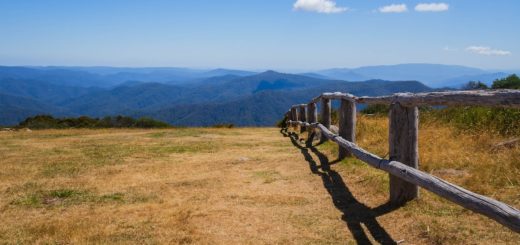A Quick Guide to Planning Your Year

The beginning of the year offers such a beautiful blank slate.
A fresh beginning is something to take advantage of: we can start anew, and reinvent our lives.
If you’re feeling like you’re in a bit of a rut, this is the perfect time to make the most of this year’s blank slate.
In this post, I’ll talk about why planning your year is important, how to deal with burnout you might be feeling, and the process I use for planning my year.
I’ll also invite you to a live training I’ll be doing next week on yearly planning!
Why Planning Your Year is Important
The first thing to acknowledge is that our year never goes according to plan. If you look back at my plans for the last handful of years, you’ll see that I often miss at least half of my targets, and what I actually did during the year couldn’t be predicted at the beginning, because you never know what will unfold during the year. The last couple of years have really driven that point home.
That said, the planning I’ve done at the beginning of the year has mattered, a lot.
Setting a direction at the beginning of the year is an important act of reflection, of imagining, of deciding what’s important to you. Of choosing where you’d like to go, and creating new possibility for yourself and others.
And as you navigate in that direction during the year, getting off course is part of the journey — you can look at what’s throwing you off course and use that as a place of learning and practice. You can also reassess what’s important during the year, as an act of continual renewal and course correction.
Not ending up where we planned is expected. But the planning itself is an act that changes us.
How to Deal with Your Burnout
So a lot of you are probably feeling burned out from this pandemic. Planning projects probably doesn’t sound exciting right now, from the place of being burned out. I get it.
So plan for recovery and rest. Planning your year doesn’t have to be planning a bunch of work — it can be planning time off, planning self-care and healing, planning things that feel rejuvenating and regenerative.
Before you start this planning process, I encourage you to take a few moments of silence, and check in with yourself — how much energy do you have? What do you need? What would help you get your mind in a clearer place?
Take a breath, and enjoy the space of planning as a contemplative place of spaciousness.
How I Plan My Year
Every year, I take a few days and give myself some reflective space.
Here’s what I do, in brief:
- Reflect on the past: I reflect on the year that just passed — what did I do, accomplish, fail at? What can I learn from all of this? What do I want to celebrate and be grateful for?
- Clear things out: This part is optional, but I like to clear out my inbox, clean my house, get small tasks done, clear out my reading list of articles I haven’t read, and clear out my emotional space. What do I need to go into the next year clear of burdens? What do I need to let go of? If you have the time, this is a really nice thing to do — clear yourself out.
- Imagine what I want: With the blank slate of a year in front of me, I like to imagine what could be possible. I could write a book, start a podcast, hold workshops, launch a new product, start a community, go on retreat, build something, learn something, meet new people, travel, deepen relationships. From all of these possibilities … what would be amazing? What would light me up? What would make my heart sing? I listen to this, and speak it to someone, and listen some more.
- Start to choose: From my possibilities, I start to make a short list — what do I actually want to focus on, what do I actually want to create? This can be difficult, because sometimes I want to do so many things. I curate, and put the others on the back burner. I look at the short list, and I ask myself: at the end of the year, would I be thrilled if I’d accomplished these things?
- Create structure: Once I have a short list … then it’s a matter of creating the structure I’ll need to actually make the short list happen. Again, even if I don’t accomplish all of the goals, just creating and experimenting with the structure is important. Some examples of structure that work well for me: monthly reviews, weekly reviews, a focus for each month, a morning routine, themed days of the week (writing day, meetings day, admin day, etc). These reviews, btw, allow me to adjust my course along the way.
The key to all of this is to spend a little time to reflect and to choose. Set up some structure. And have the structure allow yourself to review and adjust throughout the year. This way your plan becomes more suited to the reality that actually unfolds.
An Invitation to a Training
If you’d like to dive into this, next week I’ll be holding a 1-hour special bonus annual planning workshop for members of my Fearless Living Academy. It’s set for Thursday, January 13th at 9am Pacific / noon Eastern.
In this workshop, I will cover:
- Why planning is important
- How to plan even if you’re feeling burnout
- The process I use
- What I’ve learned about planning
- Some of my favorite tools!
And I’ll answer your questions, of course. Let’s dive into this together!
A fewthings to note about Fearless Living Academy, where we dive into creating a meaningful life through habits, purpose and impact:
- We’ve decided to continue to offer the founder’s lifetime access at least until we reach our first 1,000 members.
- Alongside the lifetime access, we’re offering an additional 10% off using the coupon code LOVE throughout the month of January for new enrollments.
- This bonus workshop session on planning your year is only available to FLA members.



